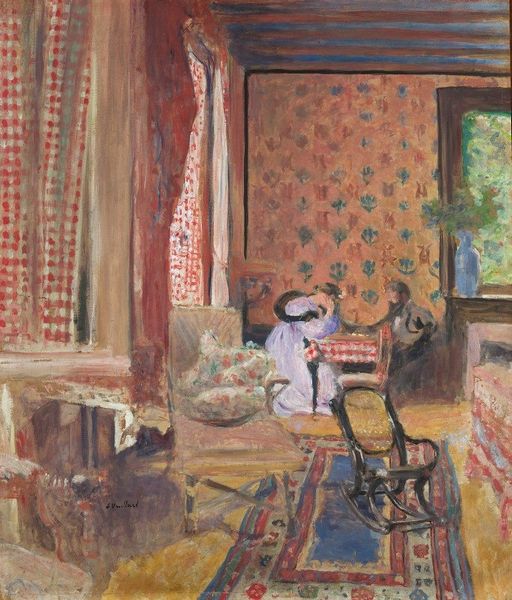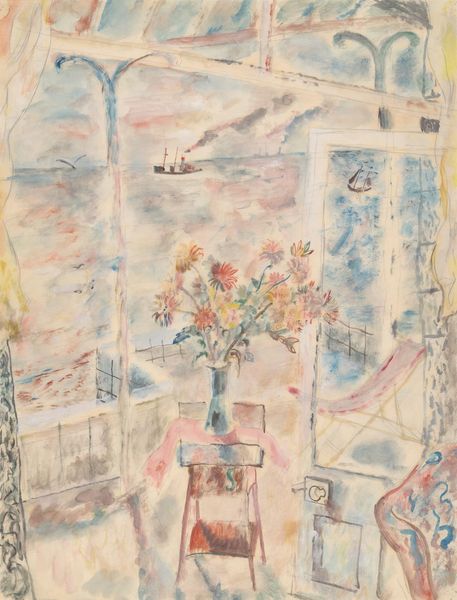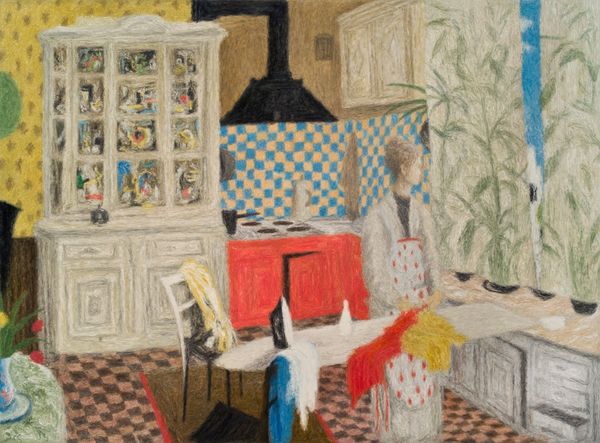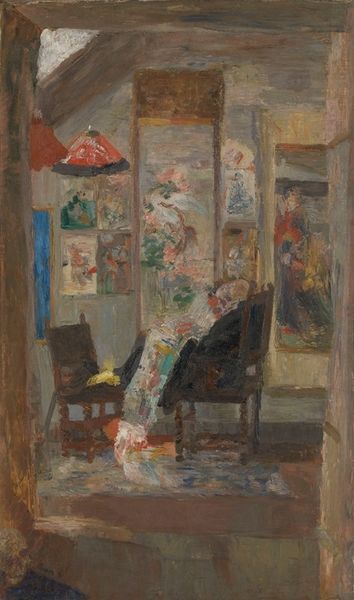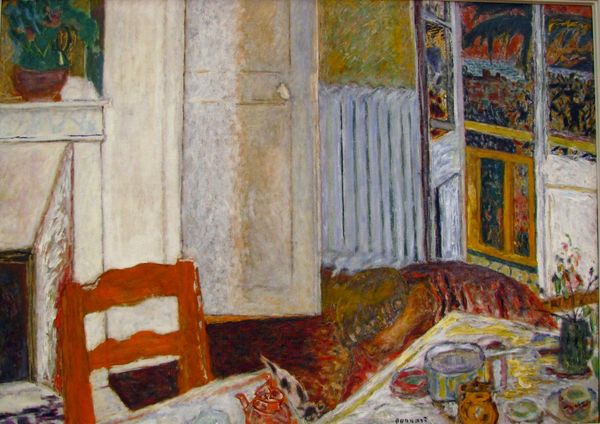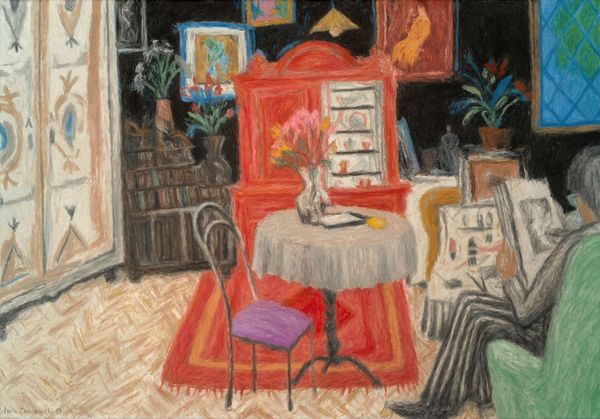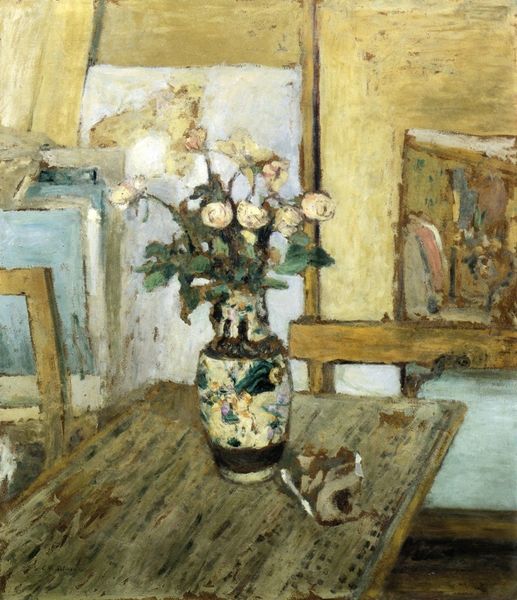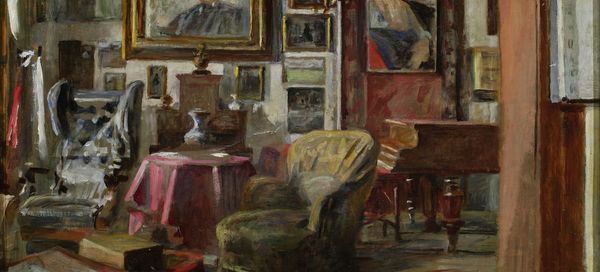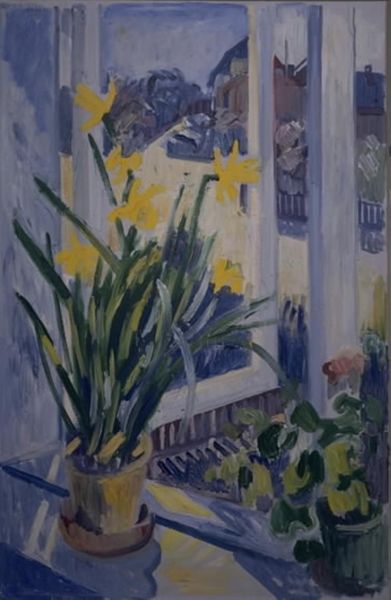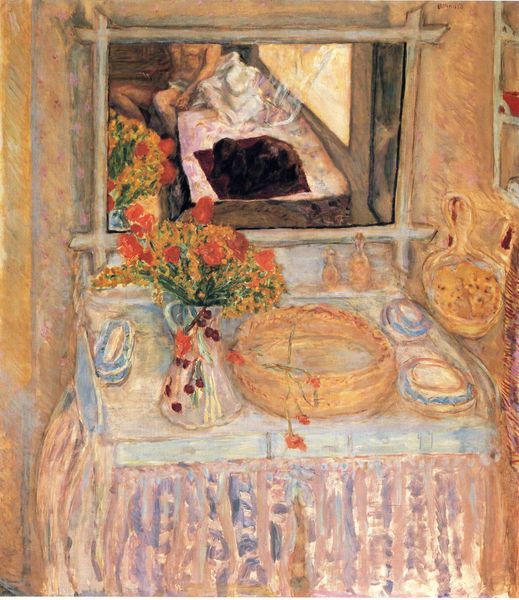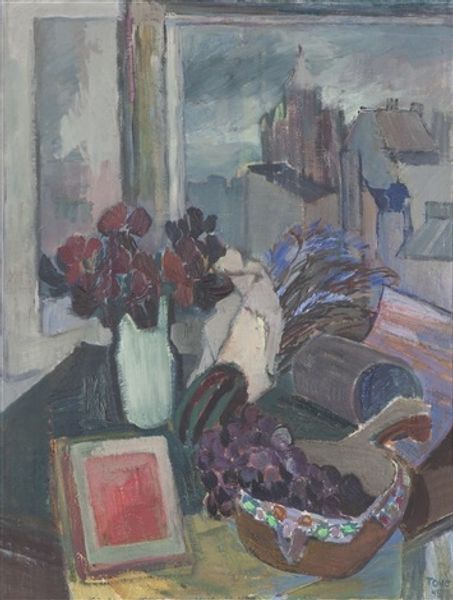
Copyright: Henri Matisse,Fair Use
Curator: Welcome! Let's consider Henri Matisse’s 1924 painting, "Interior, Flowers and Parakeets". The work presents a seemingly straightforward domestic interior, rendered with the vibrant colors and flattened perspective characteristic of his Fauvist style. Editor: It's instantly calming, wouldn't you say? The colors, though intense, feel harmonious. There’s almost a theatrical sense of depth created by all the textiles, yet the forms themselves remain quite grounded. The eye is drawn to all of this vibrant decoration, and one wonders what the material sourcing looked like, and who profited. Curator: Indeed. Consider that Matisse created this work during a period of personal and societal transition. The aftermath of World War I deeply influenced artistic expression and ideas of domesticity. The parakeets—symbols often linked to exoticism, privilege and status–placed in the center, encourage contemplation about access and class, perhaps suggesting both comfort and constraint. Editor: It’s important to recognize the significance of the textiles here: the wallpapers, tablecloths, and carpets all bear designs hinting at far-flung origins. What sort of market system and global exchange of goods produced the interior presented in this painting? Curator: The patterns themselves create a dense visual field, evoking a sense of layered identity. The Fauvist movement encouraged exploring radical individualism and the bold liberation from traditional norms and color. It encourages thinking beyond Eurocentric constraints by blending oriental and domestic elements, creating a rich, complex cultural tapestry. What do you make of his use of oils in capturing all these competing forms? Editor: Matisse employed oils to render the visual texture of the different material presences within the depicted scene, thereby highlighting not only the formal complexity of this composition, but its tangible dimension too. It raises questions of labor – both the artist’s labor in replicating the forms within this domestic setting, but the invisible laborers that produced these fabrics. Curator: Looking through an intersectional lens highlights how our understanding of interiority intertwines with historical narratives of social strata, ownership, artistic choices, and personal journeys. Editor: Right. By analyzing the materiality of “Interior, Flowers and Parakeets,” we can begin to understand labor as being inherently connected to the domestic space as represented through painting, consumption, and artistry.
Comments
No comments
Be the first to comment and join the conversation on the ultimate creative platform.
